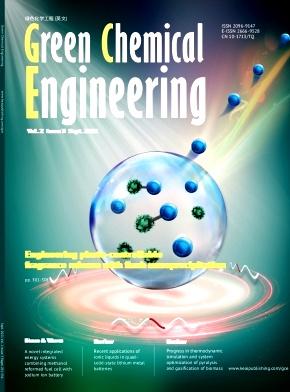Smooth pore surface in zeolites for krypton capture under humid conditions
IF 7.6
Q1 ENGINEERING, CHEMICAL
引用次数: 0
Abstract
Efficient trace radioactive krypton isotopes (85Kr) capture from air under humid conditions is a critical challenge for nuclear safety and environmental protection. Commercial zeolites suffer from low Kr/N2 selectivity due to cation-induced interactions that strengthen nitrogen (N2) adsorption, while their hydrophilicity triggers severe water competition. Herein, we proposed utilizing the smooth pore surface in pure-silica zeolites to weaken the N2 adsorption and mitigate water competition. The pure silica ZSM-11 exhibited significant Kr/N2 selectivity (4.8) and Kr uptake of 12.8 cm3/g at 298 K and 1 bar, superior to the commercial zeolites. Its intersecting ten-membered ring (10-MR) channels facilitated optimal Kr interactions and distribution, as corroborated by Grand Canonical Monte Carlo (GCMC) simulations, which revealed preferential multisite Kr···O interactions with significantly higher Kr densities than N2. Dynamic breakthrough experiments demonstrated that pure silica zeolites, particularly ZSM-11, achieved superior Kr capturing performance and cycling stability under humid conditions (relative humidity (RH) = 72.6%), realizing a leap from ppm levels to high purity (> 80%) Kr. This work demonstrated the rational design of pore surface and topologies in zeolite for inert gases capture provided an effective technological route for radioactive krypton isotopes separation under humid conditions.

在潮湿条件下,沸石的光滑孔表面用于氪捕获
在潮湿条件下从空气中有效捕获痕量放射性氪同位素(85Kr)是核安全和环境保护的关键挑战。由于阳离子诱导的相互作用加强了氮(N2)的吸附,商业沸石的Kr/N2选择性较低,而它们的亲水性引发了严重的水竞争。在此,我们提出利用纯硅沸石的光滑孔表面来减弱N2吸附和缓解水竞争。纯二氧化硅ZSM-11在298 K和1 bar条件下具有显著的Kr/N2选择性(4.8)和Kr吸收量(12.8 cm3/g),优于工业沸石。其交叉的十元环(10-MR)通道促进了最佳的Kr相互作用和分布,正如大规范蒙特卡罗(GCMC)模拟所证实的那样,显示出Kr密度显著高于N2的优先多位点Kr···O相互作用。动态突破实验表明,纯硅沸石,特别是ZSM-11,在潮湿条件下(相对湿度(RH) = 72.6%)具有优越的Kr捕获性能和循环稳定性,实现了从ppm水平到高纯度(> 80%) Kr的飞跃。该工作证明了沸石中用于惰性气体捕获的孔表面和拓扑结构的合理设计为放射性氪同位素在潮湿条件下分离提供了有效的技术途径。
本文章由计算机程序翻译,如有差异,请以英文原文为准。
求助全文
约1分钟内获得全文
求助全文
来源期刊

Green Chemical Engineering
Process Chemistry and Technology, Catalysis, Filtration and Separation
CiteScore
11.60
自引率
0.00%
发文量
58
审稿时长
51 days
 求助内容:
求助内容: 应助结果提醒方式:
应助结果提醒方式:


